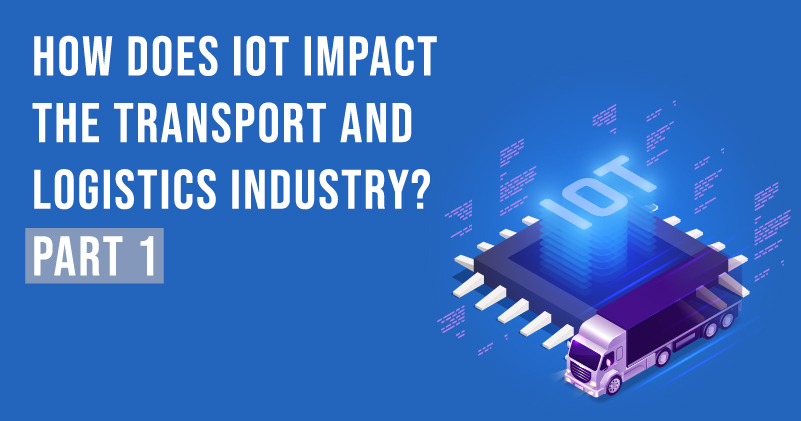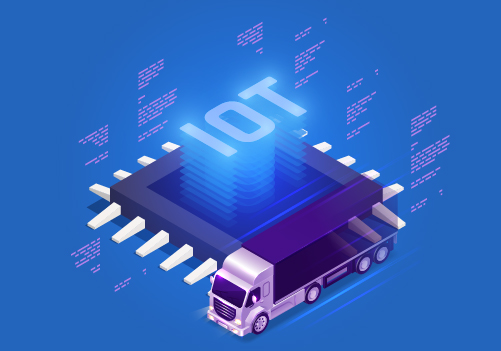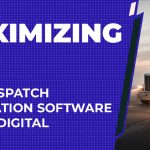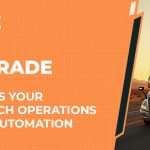
The transportation and logistics sectors play a crucial role in the global economy. They ensure that people, goods, and products can move smoothly across long distances. In the future, the number of people in the worldwide consumer class is expected to increase significantly. Additionally, most manufactured goods are transported in containers. This means that there will be a huge demand for efficient transportation services.
To address these challenges, industry leaders have found a groundbreaking solution called the Internet of Things (IoT). This involves using smart sensors, onboard diagnostics in traditional trucks, and implementing IoT-based vehicle tracking systems. By doing this, transport and logistics companies can gain a competitive advantage. They will have real-time information about their vehicles, allowing them to identify and fix inefficiencies in a rapidly changing environment quickly.
With the help of IoT, companies can optimize their operations, simplify processes, and provide exceptional service in real-time. It also offers improved visibility, flexibility, and sustainability.
Welcome to our two-part blog series that delves into the transformative power of the Internet of Things (IoT) in the transport and logistics industry. In this series, we will first provide a comprehensive understanding of IoT in the context of this industry, followed by an exploration of its diverse applications and their impact.
Logistics and Transport: Understanding IoT
IoT opens up a new era of efficiency, visibility, and optimization. IoT involves a network of connected devices communicating and sharing data automatically without human involvement.
In the transportation and logistics industry, IoT allows for the smooth integration of physical assets, vehicles, and infrastructure with smart sensors, software, and data analytics. This interconnected system enables you to collect real-time information, monitor operations, and make decisions based on data analysis.
IoT adoption in transportation and logistics brings several benefits, and here’s a simplified breakdown of its essential components and advantages:
-
Sensors and Devices:
– Benefits: Improved visibility and tracking of assets and vehicles, real-time monitoring of environmental conditions, and better asset management and utilization.
-
Connectivity:
– Benefits: Seamless communication and data exchange, real-time updates and remote monitoring, and enhanced collaboration and coordination.
-
Data Analytics and Cloud Computing:
– Benefits: Advanced data analysis and insights, predictive maintenance for proactive decision-making, streamlined operations, and scalability and accessibility through cloud storage.
-
Enhanced Visibility and Tracking:
– Benefits: Real-time location tracking of assets, vehicles, and shipments, improved supply chain transparency, and accurate and timely decision-making.
-
Optimized Operations and Efficiency:
– Benefits: Efficient route planning and resource allocation, improved fleet management and asset utilization, and cost reduction through operational efficiency.
-
Proactive Maintenance and Asset Management:
– Benefits: Predictive maintenance to prevent breakdowns, optimized asset lifespan, reduced downtime, and efficient scheduling of maintenance tasks.
-
Improved Safety and Security:
– Benefits: Monitoring and improving driver behavior, prompt responses to emergencies and potential hazards, and enhanced theft prevention and asset security.
-
Sustainability and Environmental Impact:
– Benefits: Optimized fuel consumption and reduced carbon footprint, decreased environmental impact through efficient logistics, and contributed to sustainability goals and conservation efforts.
In simpler terms, implementing IoT in transportation and logistics means using devices with sensors to collect and exchange data. This enables better tracking, communication, and decision-making. It also leads to optimized operations, proactive maintenance, improved safety, and a positive environmental impact.
Conclusion
Adopting IoT in the transportation and logistics industry brings numerous benefits and advantages. With its key components of sensors and devices, connectivity, data analytics, and cloud computing, enhanced visibility and tracking, optimized operations and efficiency, proactive maintenance and asset management, improved safety and security, and sustainability and environmental impact, IoT revolutionizes how businesses operate.
To fully leverage the potential of IoT, it is crucial to partner with a reliable technology provider. TMS-Digital is a leading transportation and logistics software provider committed to embracing AI and IoT. Their expertise and innovative solutions enable businesses to harness the power of IoT, optimize their operations, and stay ahead in the rapidly evolving industry.
To delve deeper into the topic, the next part of the blog will explore specific IoT applications in transport and logistics. By understanding the practical implementations and use cases, readers can gain insights into how IoT transforms the industry. Don’t miss out on the upcoming section – “IoT Applications in Transport and Logistics.”
Contact us today for a free demo and learn how your business can benefit from these transformative technologies.





